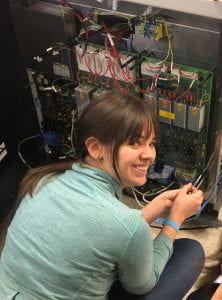
Visiting Project Scientist
Institute of Marine Sciences
sccarter[at]ucsc[dot]edu
Research interests: paleoceanography, isotope geochemistry, computational modeling
Biography
My primary research interests are in paleoceanography, using geochemical techniques on marine sediments to investigate environments of the past, as well as computational techniques to model marine processes. I was born and raised in Austin, Texas. I was always interested in chemistry and the natural world, but having never been introduced to geology in high school, I entered university as a chemical engineering major. After two years, I realized this was not for me and set out looking for a major that aligned more with my interests. I stumbled upon geology. After doing a little research on the field, I switched my major without ever having taken a single geology class, and I’ve never looked back! I completed my B.S. in Geology at Texas A&M University in 2012 and my M.S. in Earth Science at the University of Texas at Arlington in 2015. I then moved to Ohio, where I completed my PhD in Earth Science in August 2020. I am currently a visiting project scientist at UCSC.
Research
My PhD research used both geochemical and computational techniques to gain a better understanding of environmental processes in the present day and in the geologic past. The first project I focused on analyzed strontium isotopes from pore fluids in marine sediment cores to characterize diagenetic processes and investigate how these might affect other records produced from the cores. In my second project, I analyzed the isotopic composition of strontium and neodymium of the separated clay fraction in sediments from the same cores to characterize sediment provenance and transport processes. My final two projects involved the marine barium cycle, where I did a reanalysis of the marine barium cycle as a two-box model. I also expanded a more complex, spatially resolved oceanic carbon cycle model to include the marine barium cycle. These projects were inspired by research I pursued during my master’s degree, which used marine barite (BaSO4) as a proxy for paleoproductivity in the middle Miocene. My work at UCSC is to analyze calcium isotopes on the thermal ionization mass spectrometer at Ohio State. I am optimizing the calcium separation and analysis methods, and analyzing barite and dolomite samples.